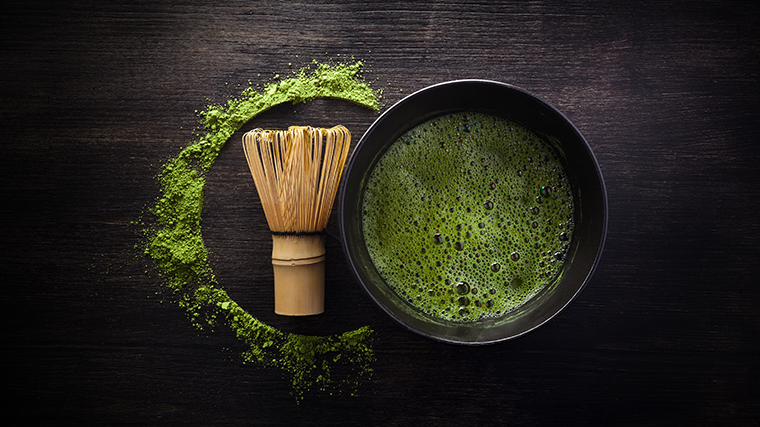How does stress affect what you eat?
Chronic stress is often associated with a heavy mental load, which makes thinking about balanced nutrition go down the drain. The body’s functioning is also disrupted by persistently high levels of cortisol. Among other things, it upsets sugar metabolism, which affects our dietary choices, body and mood.
Studies show that long-term stress has a major impact on nutrition. In such situations, about 40% of people skip meals, eating less than their calorific requirements. Just as many people tend to exceed their calorie requirements. Only 1 in 5 people do not change their eating habits as a result of stressful situations.
Many people stress-eat by reaching for unhealthy snacks and sweets. Others react the opposite way – they lose their appetite and “forget” to eat. One thing is certain – chronic stress often leads to abandoning healthy eating habits or deepening the destructive eating patterns. Both stress-eating and restricting food in stressful situations are behaviours that exacerbate problems with high cortisol levels.
The tendency to stress-eat can be justified by the body’s physiology. It is no coincidence that under stress you are most likely to reach for sweets, candy bars or crisps. A chronically stressed nervous system vigorously seeks “distraction” from the stressful factor. Tasty, fat- and sugar-rich food activates the brain’s reward system and causes the release of dopamine, the neurotransmitter responsible for feelings of motivation and pleasure. Satisfying a craving for a not-so-healthy product can therefore bring temporary relief. However, these are only appearances, while in reality the problem is only getting worse. It is very easy to fall into a vicious cycle:
- Stress and high cortisol cause glucose release, resulting in cravings for high-calorie food.
- You stress-eat with low-nutritional but calorific and pro-inflammatory snacks.
- Overeating predisposes to overweight and obesity. This amplifies inflammation, which is a stressor for the body and increases cortisol production.
- Increased cortisol production means even more stress and an activated need to stress-eat in search of dopamine.
- Overeating increases, body weight, inflammation and cortisol levels rise, and as a result, the body becomes even more stressed.
Long-term elevated cortisol levels increase appetite, especially cravings for foods high in energy and simple sugars. This is due to the disruption of sugar metabolism by excess cortisol, inflammation and the stressed nervous system’s constant search for a dose of dopamine. A common effect of chronic stress and excess cortisol is changes in the appearance and composition of the figure – loss of muscle mass to fat tissue and the characteristic cortisol belly.
Be sure to read: How Does Stress Affect Our Figure?
What to eat to lower cortisol levels?
Diet can both exacerbate the problem of cortisol overproduction and support its reduction. In the fight against chronic stress, it is crucial to enrich the menu with valuable products that calm the nervous system and have an anti-inflammatory effect. Here are the ingredients to include in your “stress-reduction diet”.
- Matcha and green tea
Too much caffeine is not conducive to fighting excessive cortisol levels, so it is a good idea to limit the amount of coffee you drink – especially in large quantities. Alternatives include matcha or green tea, which provide a milder but longer-lasting boost than coffee (thanks in part to L-theanine). In addition to supporting concentration, they also have antioxidant qualities.
- Oily sea fish
Oily sea fish is one of the best sources of omega-3 fatty acids, which have anti-inflammatory effects and relax the nervous system. It is worth consuming oily sea fish regularly, twice a week. The most valuable omega-3 fatty acids are found in salmon, mackerel, tuna, halibut, herring and sardines.
- Nuts, seeds and grains
Magnesium plays a key role in stress regulation – it contributes to the synthesis of serotonin (the so-called happy hormone) and helps maintain hormonal balance. The best natural sources of magnesium include seeds, nuts and grains. Here is the content of this macronutrient per 100 g of selected products:
- Pumpkin seeds – about 550 mg
- Brazil nuts – about 376 mg
- Sunflower seeds – about 359 mg
- Sesame – about 351 mg
- Chia seeds – about 330 mg
- Cashews – about 292 mg
- Almonds – about 280 mg
It is worth including about 30 grams of seeds, nuts or grains in the daily diet. It is a good addition to salads or oatmeal, or a raw snack.
- Fermented dairy (and not only)
Buttermilk and yoghurts support the fight against excess cortisol in two ways. These products improve gut function and the health of the gut microbiome. The gut-brain axis is a viable connection – so a healthy microbiome can support stress and cortisol reduction. Secondly, fermented dairy is also a source of protein, providing satiety and proper sugar balance. Yoghurt or buttermilk is the perfect quick snack at work.
- A variety of fruit and vegetables
Fruit and vegetables are the foundation of a healthy diet and should definitely be among the superfoods for lowering cortisol. Variety is key – instead of focusing on rankings of the “healthiest” foods, it is a good idea to simply consume as many of them as possible. Eat a minimum of 400 g of fruit and vegetables a day (and preferably more, >800 g). This will provide your body with fibre, antioxidants and phytochemicals that support nerve balance.
- Eggs
Eggs are an excellent dietary support for lowering cortisol. They are abundant in protein, so they can be the base for filling and healthy meals that ensure stable blood sugar levels. They are also a source of B vitamins, essential for the proper work of the nervous system.
How to eat to reduce stress? Practical tips
- Bet on regularity
Too long intervals between meals are a stressor for the body and do not have a positive effect on hormonal balance (especially for women). Eat your meals at regular intervals and try to make it your routine. You do not necessarily have to eat 5 meals – adjust the number of meals and the time of eating to suit your individual lifestyle. However, maintaining relative regularity of food intake is very important to stabilize cortisol levels.
- Plan your meals in advance
Lack of a meal plan can lead to too long intervals between meals and reaching for low-nutritional snacks. Use ready-made menus or create your own plan of main meals – for example, for the whole week.
The app available in Multi.Life will help you plan your meals properly. It allows you to monitor your daily menu in real time. All you have to do is take a picture of the dish, and the AI assistant will recognize the type of food, calculate its calorie content and present the distribution of macronutrients. You can read more about the application here.
Meal planning may seem like an unnecessary activity, but it will help you avoid the added burden and stress of having to choose “what to eat”. Such a plan also helps resist the temptations of not-so-healthy eating out.
- Learn about mindful eating
In mindful eating, the focus should be on the food being eaten and the sensory experiences that accompany the eating process. Mindful eating can be a way to calm down, soothe the mind and reduce stress, while keeping you from overeating.
- Take care of hydration
Did you know that even slight dehydration can increase cortisol levels? Do not allow this situation to occur. Drink at least 2 litres of fluids a day – primarily water. You can also support yourself with healthy smoothies, infusions, or the aforementioned green tea.
- Consume the right amount of protein
Make sure you get the right amount of protein in your diet. The exact suggested protein content of your diet may vary depending on your age, gender or physical activity, but aim to consume about 1-2 grams of protein per kilogram of body weight. Adequate amount of protein in the diet protects against hunger attacks, facilitates weight loss and ensures stable satiety throughout the day.
- Follow the small steps method
When making changes to your eating routine (and not only), use atomic habits. Start with simple changes that will provide significant results, such as swapping carbonated drinks for water. Don’t put pressure on yourself to make nutrition perfect from day one. Don’t let positive changes be a source of additional stress.
References:
- Castro-Sepulveda M., Ramirez-Campillo R., Abad-Colil F., Monje C., Penailillo L., Cancino J., Zbinden-Foncea H., Mild Dehydration Increase Salivary Cortisol After a Friendly Match in Young Elite Soccer Players, Front Physiol, 2018 Sep 26;9:1347, doi: 10.3389/fphys.2018.01347, PMID: 30319450; PMCID: PMC6168646.
- Tsang C., Hodgson L., Bussu A., Farhat G., Al-Dujaili E., Effect of Polyphenol-Rich Dark Chocolate on Salivary Cortisol and Mood in Adults, Antioxidants (Basel), 2019 May 29;8(6):149, doi: 10.3390/antiox8060149, PMID: 31146395; PMCID: PMC6616509.
- Tomiyama A. J., Mann T., Vinas D., Hunger J. M., Dejager J., Taylor S. E., Low calorie dieting increases cortisol, Psychosom Med, 2010 May;72(4):357-64, doi: 10.1097/PSY.0b013e3181d9523c, Epub 2010 Apr 5, PMID: 20368473; PMCID: PMC2895000.

